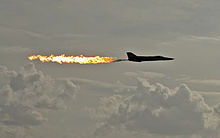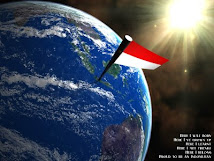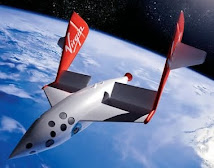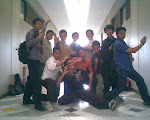Tuesday 28 September 2010
Bandung Air Show
Diposting oleh
Astrophysics Boy
di
19:03:00
0
komentar
![]()
![]()
Saturday 25 September 2010
Electromechanics
Diposting oleh
Astrophysics Boy
di
10:15:00
0
komentar
![]()
![]()
Label: A Unified Physics
Wednesday 22 September 2010
Adjustable Capacitor with Dielectric
MIT Physics Demo
Source: MIT Department of Physics
Diposting oleh
Astrophysics Boy
di
10:09:00
0
komentar
![]()
![]()
Label: A Unified Physics
Saturday 18 September 2010
Pameran Kedirgantaraan
Arip Nurahman
Department of Physics
Faculty of Sciences and Mathematics, Indonesia University of Education
and
Follower Open Course Ware at Massachusetts Institute of Technology
Cambridge, USA
Department of Physics
http://web.mit.edu/physics/
http://ocw.mit.edu/OcwWeb/Physics/index.htm
&
Aeronautics and Astronautics Engineering
http://web.mit.edu/aeroastro/www/
http://ocw.mit.edu/OcwWeb/Aeronautics-and-Astronautics/index.htm
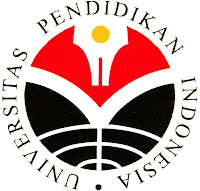

Sejarah
Pameran kedirgantaraan Perancis
Pameran kedirgantaraan Inggris
Perkembangan pameran kedirgantaraan
Diposting oleh
Astrophysics Boy
di
15:08:00
0
komentar
![]()
![]()
Label: Air Show
Tuesday 14 September 2010
Rocket Races
Grades: 3-12
Students construct balloon-powered racing cars using a foam tray and drinking straws. They then test the cars along a measured track on the floor. At the conclusion of the activity, students submit a detailed report on their racer design and how it performed in the trials.
Rocket Races [936KB PDF file]
This lesson plan is part of the Rockets Educator Guide.
Diposting oleh
Astrophysics Boy
di
10:05:00
0
komentar
![]()
![]()
Friday 10 September 2010
Air Show
Outline
Some air shows are held as a business venture or as a trade event where aircraft, avionics and other services are promoted to potential customers. Many air shows are held in support of local, national or military charities. Military air firms often organise air shows at military airfields as a public relations exercise to thank the local community, promote military careers and raise the profile of the military.
Air show "seasons" vary around the world. Whereas the United States enjoys a long season that generally runs from March to November, other areas often have much shorter seasons. The European season usually starts in late April or Early May and is usually over by mid October. The Middle East, Australia and New Zealand hold their events between January and March. However, for many acts the "off season" does not mean a period of inactivity, they use time for maintenance and practice.
The type of displays seen at an event are constrained by a number of factors, including the weather and visibility. Most aviation authorities now publish rules and guidance on minimum display heights and criteria for differing conditions. In addition to the weather, pilots and organizers must also consider local airspace restrictions. Most exhibitors will plan "full," "rolling" and "flat" display for varying weather and airspace conditions.
The types of shows vary greatly. Some are large scale military events with large flying displays and ground exhibitions while others held at small local airstrips can often feature just one or two hours of flying with just a few stalls on the ground. Air Displays can be held during day or night with the latter becoming increasingly popular. Shows don't always take place over airfields; some have been held over the grounds of stately homes or castles and over the sea at coastal resorts.
Attractions

Before the Second World War, air shows were associated with long distance air races, often lasting many days and covering thousands of miles. While the Reno Air Races keep this tradition alive, most air shows today primarily feature a series of aerial demos of short duration.
Most air shows will feature warbirds, aerobatics, and demonstrations of modern military aircraft, and many air shows offer a variety of other aeronautical attractions as well, such as wing-walking, radio-controlled aircraft, water/slurry drops from firefighting aircraft, simulated helicopter rescues and sky diving.
Specialist aerobatic aircraft have powerful piston engines, light weight and big control surfaces, making them capable of very high roll rates and accelerations. A skilled pilot will be able to climb vertically, perform very tight turns, tumble his aircraft end-over-end and perform manoeuvres during loops.
Solo military jet demos, also known as tactical demo, feature one aircraft, usually a strike fighter or an advanced trainer. The demonstration focuses on the capabilities of modern aircraft used in combat operations. The display will usually demonstrate the aircraft's very short (and often very loud) takeoff rolls, fast speeds, slow approach speeds, as well as their ability to quickly make tight turns, to climb quickly, and their ability to be precisely controlled at a large range of speeds.
Manoeuvres include aileron rolls, barrel rolls, hesitation rolls, Cuban-8s, tight turns, high-alpha flight, a high-speed pass, double Immelmans, and touch-and-gos. Tactical demos may include simulated bomb drops, sometimes with pyrotechnics on the ground for effect. Aircraft with special characteristics that give them unique capabilities will often display those in their demos; For example, Russian fighters with Thrust vectoring may be used to perform Pugachev's Cobra or the Kulbit, among other difficult manoeuvers that cannot be performed by other aircraft. Similarly, an F-22 pilot may hover his jet in the air with the nose pointed straight up, a Harrier or Osprey pilot may perform a vertical landing or vertical takeoff, and so on.
See also
Diposting oleh
Astrophysics Boy
di
15:00:00
0
komentar
![]()
![]()
Label: Air Show
Sunday 5 September 2010
Fusion Power
Diposting oleh
Astrophysics Boy
di
09:45:00
0
komentar
![]()
![]()
Label: A Unified Physics
Wednesday 1 September 2010
Solid-state physics
Diposting oleh
Astrophysics Boy
di
09:30:00
0
komentar
![]()
![]()
Label: A Unified Physics







